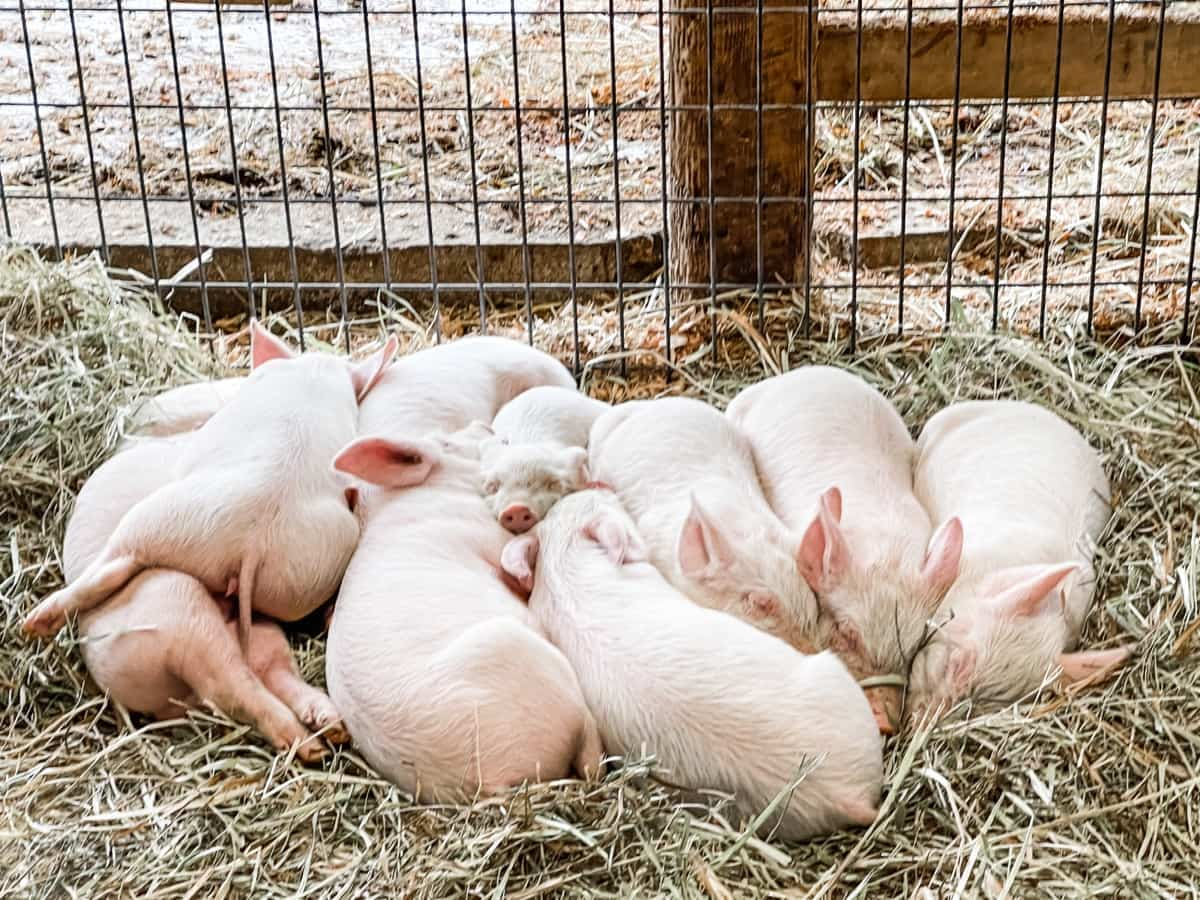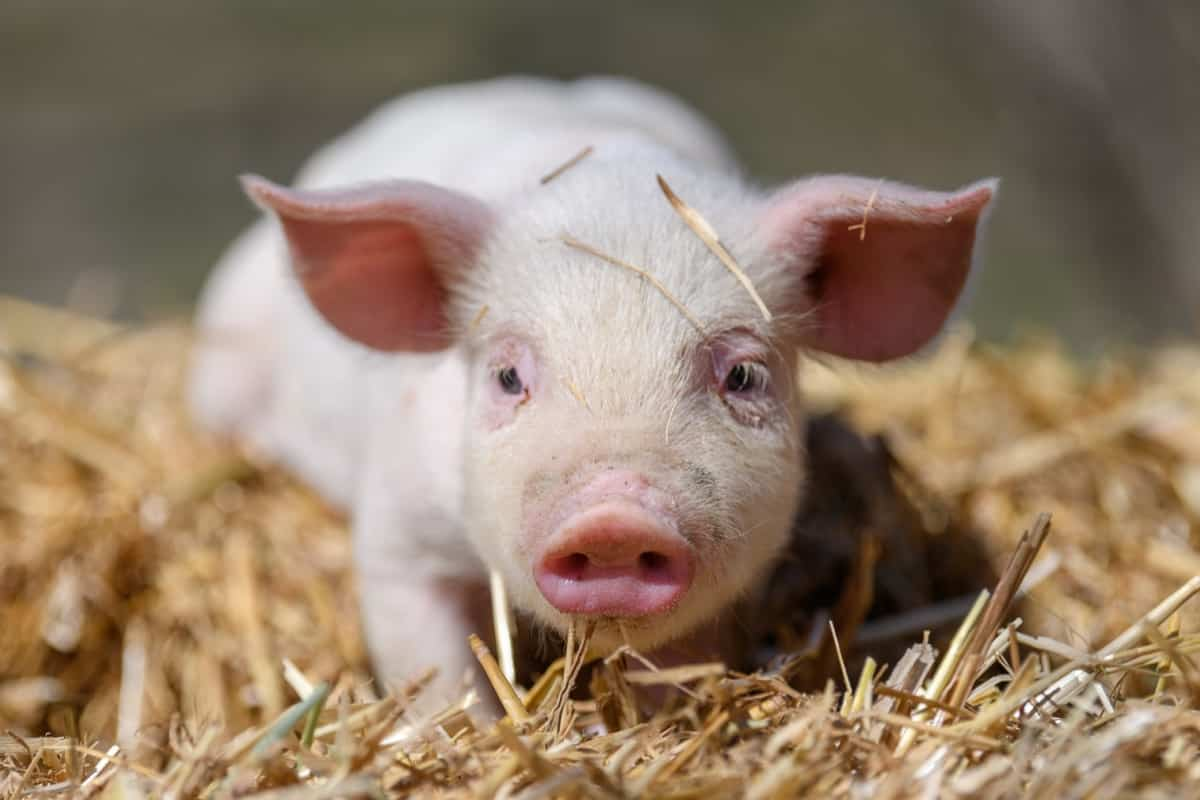Piglet mortality refers to the death of piglets within the first few weeks of life, which is a major challenge in swine production worldwide. Several factors contribute to piglet mortality, including poor sow nutrition, low birth weight, infectious diseases, and environmental stressors. Farmers use management strategies, such as improved nutrition and housing, vaccination programs, and hygiene measures, to reduce piglet mortality rates.

Piglet anemia is a common condition that affects newborn piglets, characterized by low hemoglobin levels in the blood. Iron deficiency, parasitic infections, or genetic factors can cause piglet anemia. Iron supplementation through injections or dietary supplements is commonly used to prevent and treat piglet anemia. Anemic piglets may appear weak, pale, and lethargic, and if left untreated, the condition can lead to reduced growth rates, increased susceptibility to diseases, and higher mortality rates.
Piglet/Swine Mortality and Anemia Management
Causes of Piglet Mortality
Piglet mortality is a significant challenge in pig farming and can lead to significant economic losses. Pre-weaning mortality rates can range between 12-30%, with most deaths occurring due to starvation and overlying by the sow. However, there are various other causes of piglet mortality, including stillbirths, genetic defects, enteritis, pneumonia, and unknown reasons. Therefore, farmers must implement various management strategies to minimize piglet mortality rates.
The most common cause of piglet mortality is starvation and overlying by the sow. Farmers can take several measures to prevent these, such as improving newborn piglets’ birth weight and vigor, minimizing the risk of chilling or hypothermia, and minimizing agalactia. Agalactia, or lack of milk production in the sow, can be caused by poor sow nutrition, mastitis, and stress. Farmers can prevent agalactia by providing adequate nutrition to the sow during gestation and lactation, practicing good hygiene, and monitoring the sow’s health closely.
Causes of Piglet Anemia
Piglet anemia is a common condition that affects newborn piglets, characterized by low hemoglobin levels in the blood. Hemoglobin is a red blood cell protein that transports oxygen throughout the body. Piglets are particularly susceptible to anemia because they have a limited iron reserve in their liver for hemoglobin synthesis, and their milk is very low in iron.
Iron is an essential mineral for the production of hemoglobin, and without adequate iron levels, piglets can develop anemia. The primary cause of piglet anemia is iron deficiency. During gestation, the placenta transfers limited amounts of iron to the fetus, and piglets are born with low iron reserves. Additionally, sow’s milk is low in iron, contributing to the risk of piglet anemia.
In case you missed it: Classical Swine Fever Management in Swine: Disease Symptoms, Treatment, and Prevention

Symptoms of Piglet Anemia
The symptoms of piglet anemia can vary depending on the severity of the condition. Still, some common signs include pale skin in the region of the ears and belly, listlessness, and rapid breathing. Anemic piglets may also exhibit diarrhea and reduced appetite, further exacerbating the condition. In severe cases of piglet anemia, piglets may be too weak to nurse, leading to further dehydration and malnourishment. This can cause a vicious cycle of anemia because the piglet’s body needs enough food to make hemoglobin, which is needed to carry oxygen to all parts of the body.
Treatment for Piglet Anemia
- Pig farming suffers from piglet anemia, which must be prevented and treated for optimum health and growth. Iron dextran injections can cure piglet anemia.
- According to Managing Pig Health, piglets should receive a one or 2ml infusion of 150-200mg iron dextran. A 2ml dose at birth can cause muscle trauma, so pigs should receive iron supplementation from three to five days of age.
- A 21-gauge (5/8-inch) needle should inject iron dextran into the posterior leg muscles or neck.
- Oral iron can be given to the piglet at seven, 10, and 15 days of age, but it takes time. Oral fortification works but takes longer than injections.
Control for Piglet Anemia
- Piglet anemia can be controlled by placing fresh earth in the piglets’ pen, using soil drenched with ferrous and copper sulfate solution, daily administration of ferrous sulfate solution, and painting the mother’s udder with ferrous sulfate solution and sugar. However, these methods are labor-intensive.
- The most effective and easiest method is to inject the piglet with 100-150 mg of iron in the form of iron dextron three days after birth, and if necessary, a second smaller injection can be given three weeks later.
- Supplementing piglets with extra iron is crucial to prevent or treat piglet anemia, and this can be done through injections or oral dosing. The most common method is injections with iron compounds, such as iron dextran or galactan. However, injections require careful handling to prevent infections, staining, and other complications.
- Oral dosing is an alternative but can be more costly and less effective if piglets are scouring. Timing and dosing techniques are critical to the success of oral dosing.
- Cheaper inorganic iron, such as ferrous sulfate, may be used orally but require repeated dosing due to limited absorption. Careful monitoring and competent handling by trained personnel are necessary to ensure the welfare of piglets.
Impact, Risk, Monitoring, and action for Piglet Anemia
Piglet anemia can cause about 10% of pre-weaning deaths in untreated litters and occurs before weaning. Diagnosis requires examination of unclotted blood samples and smears at post-mortem, as apparent paleness can be misleading. The condition can be addressed through supplementation with iron, as piglets cannot obtain sufficient amounts from their diets after weaning. Proper monitoring and action are necessary to prevent or treat piglet anemia.
Improving Piglet Survival and Mortality
Pre-weaning piglet mortality is a complex issue requiring a multifactorial approach. In addition to stillbirth, starvation, and crushing, there are several other potential causes of piglet mortality, including piglet anemia, neonatal diarrhea, hypothermia, and diseases such as colibacillosis and streptococcal infections. Environmental factors, such as housing conditions and temperature regulation, as well as management practices, such as colostrum intake and vaccination, also play a role in piglet mortality.
In case you missed it: Foot and Mouth Disease (FMD) Management in Pigs/Swine: Symptoms, Treatment, and Prevention

Conclusion
Pig farms succeed by managing piglet deaths and anemia. Early detection, treatment, and prevention methods like iron supplementation and hygiene can greatly reduce piglet losses and promote healthy growth and development.
- Beneficial Insects in Pest Management
- Natural Solutions for Pest Control in Flower Gardens
- Types of Fungicides Used in Agriculture
- Common Issues in the Fruit Development Stage of Pomegranate Farming
- Fruit Development Issues in Papaya: Easy Solutions and Treatment
- Soil-Borne Diseases and How to Protect Your Plants
- Practices to Prevent Disease Spread in the Garden
- From Wilted to Thriving: How to Treat Root Rot Naturally in Houseplants
- Natural Remedies to Cure Brown Spots on Fig Tree Leaves